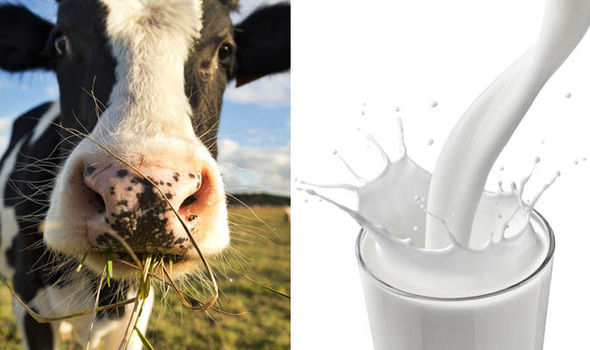What do you feed a baby softshell turtle
A Guide to Caring for Softshell Turtles as Pets
If you're interested in an aquatic pet that's a little out of the ordinary, consider a softshell turtle. As the name suggests, these strange-looking turtles lack the one characteristic almost all turtles share: a hard shell. This makes them more susceptible to attacks in the wild. But unlike their fellow turtles, softshells can move quickly on land. This family of turtles is native to parts of Africa, Asia, and North America. In places where turtle soup is a regular menu item, it's likely that softshell turtle meat is part of the recipe. But if they can avoid the stew pot and the occasional alligator, softshell turtles can be intriguing pets for the right owner. These turtles are more for watching than for handling as pets. And they do require some effort to get their housing setup correct. But once you establish a routine, their agile swimming and other antics can entertain you for many years.
Species Overview
Common Names: Softshell turtle, smooth softshell turtle, Florida softshell turtle, spiny softshell turtle
Scientific Names: Apalone mutica, Apalone spinifera, Apalone ferox
Adult Size: Up to 14 inches long for Apalone mutica and Apalone spinifera; over 2 feet long for Apalone ferox
Life Expectancy: 25 years or more
Softshell Turtle Behavior and Temperament
These turtles are foragers in the wild and prefer to submerge themselves in mud when on land. Because they are vulnerable to predators due to their lack of a shell, softshell turtles can be aggressive. It's not a good idea to house pairs of them together because they'll likely attack each other. They have sharp claws and strong jaws that can do serious damage. Likewise, these turtles generally don't like being handled and aren't timid about attacking a person if they feel threatened.
Furthermore, don't plan to have a softshell turtle as a pet in a home with a small child due to their aggressive nature. Plus, curious dogs, cats, and other pets can do serious damage to a softshell turtle and also might be injured in the process.
Female softshell turtles get to be much larger than the males, so owners must be prepared to find them a sufficiently large enclosure. That large enclosure also requires a moderate amount of care to keep it clean and properly heated, so this isn't a low-maintenance pet.
Housing the Softshell Turtle
The kind of softshell turtle you choose will determine the size of tank you need. For instance, the Florida softshell turtle can weigh over 40 pounds and reach over 2 feet long, requiring a large area to swim. At roughly half that size, the spiny and smooth softshell turtles are more manageable as pets. They can be kept in a large aquarium that's at least 75 to 100 gallons.
For instance, the Florida softshell turtle can weigh over 40 pounds and reach over 2 feet long, requiring a large area to swim. At roughly half that size, the spiny and smooth softshell turtles are more manageable as pets. They can be kept in a large aquarium that's at least 75 to 100 gallons.
The water must be kept very clean, and there should be nothing sharp or rough that could cause a wound on your softshell turtle in that tank. Canister filters, submersible filters, and other efficient filtration systems should be utilized to prevent bacterial and fungal infections. Moreover, provide driftwood or a floating island to allow your turtle to leave the water and bask when necessary. And include live aquatic plants if possible.
Heat
Most softshells do well in enclosures that are kept at 70 to 80 degrees Fahrenheit. Water heaters designed for fish, as well as reptile heat lights, can be utilized to maintain an optimal temperature. A basking lamp around 90 degrees Fahrenheit is usually ideal.
Light
UVB lighting is recommended in addition to heat lights to allow the turtle to metabolize calcium. These lights should be kept on for around 10 to 12 hours per day to mimic a natural day-night cycle, and they should not be blocked by any glass or plastic. The bulbs typically should be changed every six to nine months, following the manufacturer's recommendations.
Substrate
In the wild, softshell turtles love to bury themselves in the sand and mud. Provide clean play sand at the bottom of their tank to encourage this natural behavior. Don't use harsh substrates, such as gravel, which can hurt the turtle's fragile body.
Turtle and Tortoise Lighting
Food and Water
Softshell turtles eat a variety of insects, amphibians, eggs, and fish in the wild. In captivity, they are also primarily carnivores but will adapt to eating floating turtle pellets. Fish, gut-loaded crickets (crickets fed nutritious foods that then pass to your pet), worms, and other readily available prey items are typically offered to pet softshell turtles.
Larger softshell turtles will even eat pinky mice and small amphibians, such as frogs. You should always place the food in the water and let your turtle eat without having to get out of its pool. In general, feed adults once daily as much as they can consume in 15 minutes. But check with your veterinarian about the quantity and timing of the feedings for your turtle's age and size. They do not need a separate water dish.
Common Health and Behavior Problems
In the wild, softshell turtles are a favorite meal for alligators. And even in captivity, these turtles are much more vulnerable to injury than other pet turtles because they lack a hard shell. Wounds and consequent infections are common in softshell turtles, along with ear infections and intestinal parasites.
Annual checkups with a veterinarian who specializes in exotic pets are recommended. Opt for a fecal exam to check for parasites, which can wreak havoc on a turtle's immune system and overall health. Along with routine vet care, proper tank setup and water quality are key to keeping a healthy softshell turtle.
Along with routine vet care, proper tank setup and water quality are key to keeping a healthy softshell turtle.
Choosing Your Softshell Turtle
Because of their complex care needs, softshell turtles usually aren't recommended for beginners. If you think a softshell turtle is a good fit for you, get your turtle from a reputable breeder or rescue organization that can provide information on its origin and health. Expect to pay between $50 and $150 on average.
Look for a turtle that is alert, moves quickly, and does not appear lethargic. (Remember, these animals move faster than many other turtle species.) Any scaliness or cuts on the turtle's shell might indicate a turtle that has suffered an injury, which could mean it has other less obvious health issues as well. Moreover, its eyes should be clear and free of any mucus or crustiness.
10 Types of Turtles That Make Great Pets
Similar Species to the Softshell Turtle
If you’re interested in similar pets, check out:
Otherwise, check out other types of reptiles and amphibians that can be your new pet.
What Do Baby Softshell Turtles Eat?
As an Amazon Associate I earn from qualifying purchases.
Softshell Turtle Swimming in The SeaConsider a softshell turtle if you’re interested in an unusual aquatic pet. As the name implies, these weird-looking turtles lack one of the fundamental characteristics possessed by virtually all turtles: a hard shell. Turtles that do not have shells are more likely to be targeted in the wild. Softshells, on the other hand, can move quickly on land.
The softshell turtle is a species that can be found in North America, Africa, and Asia. It’s likely that softshell turtle flesh is used as a component of turtle soup in areas where it’s a popular dish. Softshell turtles, on the other hand, are fascinating pets for the appropriate owner if they can avoid the stew pot and perhaps an alligator now and then. Turtles of this sort are more for viewing than for handling as pets. They do, however, need some effort to get their habitat set up correctly.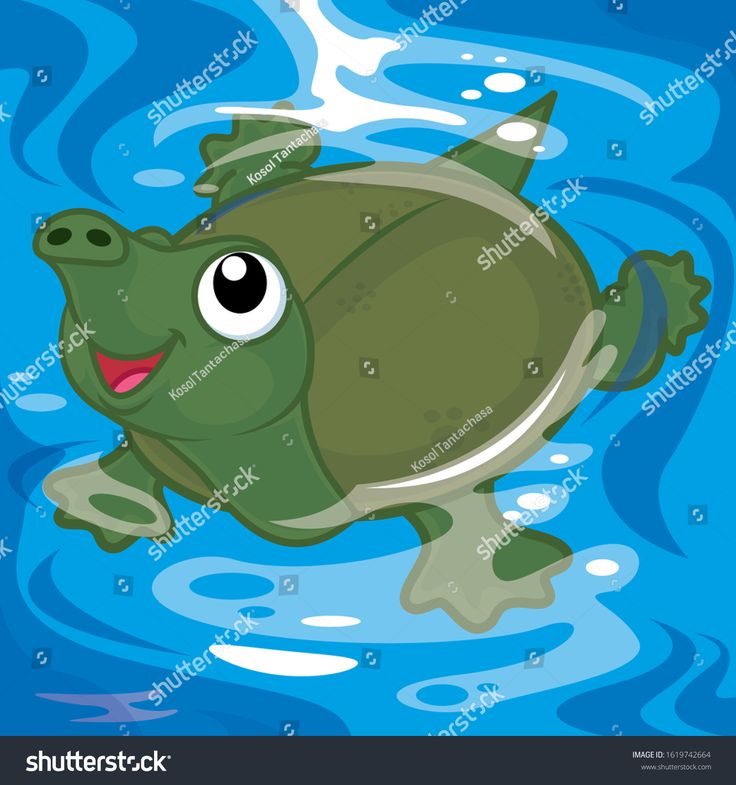 Their fast swimming and other activities, on the other hand, may keep you entertained for many years if you establish a schedule.
Their fast swimming and other activities, on the other hand, may keep you entertained for many years if you establish a schedule.
The baby softshell turtle is one of the most difficult turtles to maintain as a pet. They’re about the size of a half-dollar when they’re newborns, and youngsters develop at a sluggish pace. They do not become sexually mature until they are approximately eight years old. They emerge between August and November, then hibernate during the winter months.
Turtles are meat-eaters. However, don’t believe that feeding them raw beef and ham is fine. These creatures must consume a balanced diet that includes natural foods found in the wild and healthful options developed for their unique requirements. In the wild, a baby softshell turtle’s diet includes insects, worms, small fish, and newborn crawdads.
VitaminsVitamin A, calcium, and protein are required for baby softshell turtles to grow. Fish flakes or pellets will not provide the nutrients they require. When necessary, turtles can survive extended periods without food; therefore, if you’re having difficulties getting it to eat any of these foods, just wait a little longer.
Fish flakes or pellets will not provide the nutrients they require. When necessary, turtles can survive extended periods without food; therefore, if you’re having difficulties getting it to eat any of these foods, just wait a little longer.
To get your turtle to eat softshell pellets, mix them with chicken liver. Calcium sulfa blocks might also assist your turtle in getting the calcium it needs without devoting too much time or money to nutritional supplements.
What Do Baby Softshell Turtles Eat As Pets? Food Pellets Can Be Given To Baby Softshell TurtlesIn the wild, Softshell turtles feed on a wide range of invertebrates, eggs, fish, and amphibians. They are also primarily carnivores in captivity but will adapt to eating floating turtle pellets.
Pet softshell turtles are fed a diet that includes insects, worms, crickets, and other readily accessible prey items.
Pinky mice and tiny amphibians, such as frogs, are also eaten by larger softshell turtles. To feed your turtle without having to get out of the pool, but the food in the water and allow them to eat. In general, give adult feeders one meal a day as much as they can consume in 15 minutes. However, consult your veterinarian about the quantities and timings of the feedings for your turtle’s age and size. They do not require a separate water dish.
To feed your turtle without having to get out of the pool, but the food in the water and allow them to eat. In general, give adult feeders one meal a day as much as they can consume in 15 minutes. However, consult your veterinarian about the quantities and timings of the feedings for your turtle’s age and size. They do not require a separate water dish.
The softshell spiny turtle will consume almost everything in the water that can be stuffed into its mouth, which might include aquatic insects, fish, and crayfish. They’ll burrow themselves down at the bottom of a lake and just their heads will stick out, capturing dinner as it swims by.
How often Do Softshell Turtles Eat? Insects Like Grasshoppers Are Eaten by Baby Softshell TurtlesIt is vital to understand the dietary habits of any turtle species before adopting them. How much or how often should you feed your pet, for example? I realize that there is no one-size-fits-all answer to this question, but I’ll try to provide an overview from my own turtle-keeping experience. As this essay is about the softshell turtle, only its food-related behaviors will be addressed.
How much or how often should you feed your pet, for example? I realize that there is no one-size-fits-all answer to this question, but I’ll try to provide an overview from my own turtle-keeping experience. As this essay is about the softshell turtle, only its food-related behaviors will be addressed.
Every day for the first six months of its life feeds a softshell turtle. After that, feed the softshell turtle once every two or three days. Continue with the 2 or 3 times each week diet plan as long as you keep feeding your turtle.
From this post, you will learn how often and how much to feed your softshell turtle. In addition, I’ll go through its balanced diet as well as nutrition-related issues. So read everything until the end of this post.
Feeding ScheduleA baby softshell turtle requires additional nutrients than an adult one. Because most of the body and bone growth takes place during the early phases, this is an excellent time to start feeding your hatchling. As a consequence, you must offer your youngster vitamin-enriched meals. Due to a lack of adequate nutrition, the pet may become fragile.
As a consequence, you must offer your youngster vitamin-enriched meals. Due to a lack of adequate nutrition, the pet may become fragile.
You must feed a softshell turtle every day for the first six months of its life. By dividing the entire meal into two halves, you may feed the pet twice a day. The majority of the species’ known predators are Carnivores. As a result, include commercial pellets, earthworms, small fish, and bloodworms in the diet. Vegetables and tiny plants should not be offered to the hatchlings.
Vitamins and minerals are required for calcium to be activated. The vitamin is produced in the pet’s body using UV radiation. To enable the softshell hatch to digest minerals and vitamins, you must provide a UV bulb within the habitat in captivity.
However, for the sake of safety, nutrients like vitamin D3 and calcium should be sprinkled on each meal. Calcium is available in the form of a cuttlebone. The addition of the cuttlebones occasionally will assist the pet to achieve its calcium needs.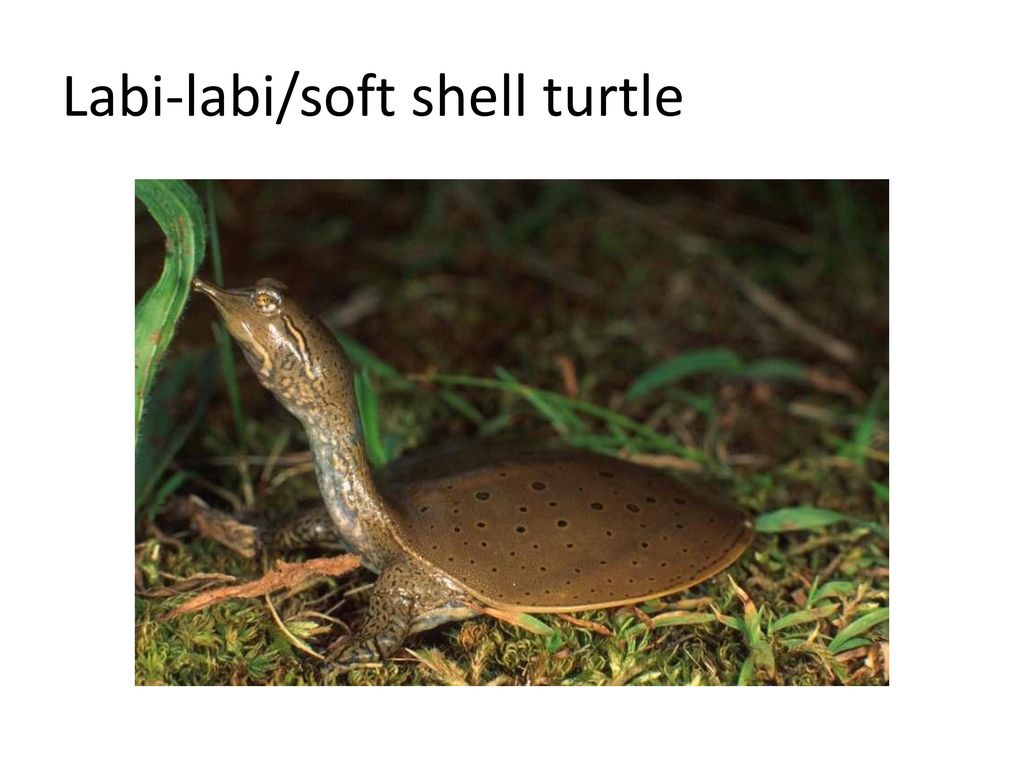
After six months, your softshell turtle’s diet plan will alter. You must now feed your pet every other day. To the meal, you may add plants or leafy greens such as kale or romaine lettuce. Plants are not loved by softshell turtles. However, if the pets are ready to eat a tiny amount of vegetables on a daily basis, you may offer them some.
Continue feeding the pet with small fish, large fish, crayfish, snails, insects, pellets, and worms. Vitamin D3 and calcium supplements should be sprinkled on each meal. Softshell turtles may like cuttlebone once in a while.
How To Take Care of Baby Softshell Turtles? Softshell TurtleFish TankIndividuals keep these creatures in aquariums, but a big tub or plastic pool with a capacity of at least twenty gallons is acceptable. A tank with a capacity of fewer than 20 gallons is suitable for a short-term solution, but you’ll eventually want to move up to a 20-gallon tank.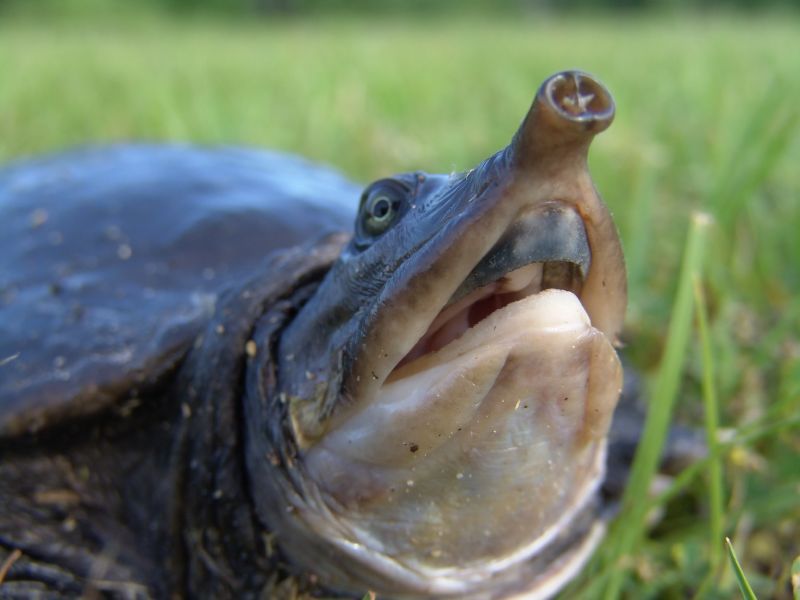
Turtles require a lot of space, so the ideal tank is one that is at least 20 gallons in size. The larger the tank, the better (provided your turtle can swim freely for exercise and exploration), but anything smaller than twenty may be too restricting.
Creating A Safe Environment in The TankTurtles shed their shells on a regular basis to keep themselves healthy, so they must have something to climb out of the water. It doesn’t have to go all the way out of the water; only deep enough for it to have its shell dried up, should be more than adequate.
When it comes to water turtles, the most crucial thing is to keep your turtle’s head above water while submerged. It’s also critical to provide a solid place to stand and breathe while submerged in water so that the turtle’s neck reaches the surface. They will spend the bulk of their time in this shallower region. If a resting area for them to rest in is not accessible, the turtle will eventually drown.
Turtles may be attacked by a variety of predators, including fish, birds, snakes, frogs, and lizards. Chelonians are susceptible to predation by a variety of animals.
Turtles may be attacked by a variety of predators, including crocodiles and hawks. They have several protection mechanisms against predators, such as hard shells and the capacity to withdraw into their shells.
Chelonians are also unable to retreat into their shells, as not all chelonians can do so. Adult turtles have fewer predators than juvenile or immature ones, but eggs and hatchlings are exposed to a plethora of dangers from birds of prey to mammals.
The primary cause of the turtle population’s decline is that only a small percentage of the eggs they produce hatch. This is due to them being eaten by predators before they have a chance to develop.
In captivity, you must keep your pet turtle safe from predators such as opossums and raccoons. Even cats and dogs have been known to attempt to eat your pet chelonian. The need for complete protection is obvious.
Even cats and dogs have been known to attempt to eat your pet chelonian. The need for complete protection is obvious.
Your turtles aren’t entirely secure even if you have a turtle pond at home. Because of this, the following article discusses what eats turtles and how you can keep your turtles safe from predators.
Predators of Baby Softshell TurtlesThe North American softshells, also known as the Apalone genus, are the species of softshell turtles we will focus on. These are the most popular softshell turtles. There isn’t much information available on other softshell turtles from around the world, especially what they eat.
Humans are the number one predator for softshells, such as the black softshell turtle. Florida Softshell, Smooth Soft-Shelled Turtle, and Gulf Coast Spiny Softshell are three varieties of American softshell turtles.
Crows, red foxes, raccoons, skunks, eagles, otters, herons, snapping turtles, egrets, alligators, and water snakes are all potential predators of baby softshell turtles.
Turtles, like all other animals, must collect resources from their environment, avoid predators, and reproduce. Turtles have a solid shell to protect them from predators and aid in their survival methods, but the softshell turtles (family Trionychidae), by contrast, have abandoned the protection of the hard shell and evolved a way of life that compensates for it.
A lack of a hard, protective shell is one of the most significant difficulties for softshell turtles. While it’s true that the softshell’s shell is leathery instead of horny, it is robustly defended by an enormous rib cage.
Softshell turtles may grow to be as big as 14 feet long and weigh upwards of 1,000 pounds. Additionally, because softshell turtles may reach tremendous sizes, they are protected against the majority of predators. The swimming ability of these turtles also aids them in avoiding predators better than some other species that aren’t as quick in the water.
The softshell turtles utilize their floppy, flatter shells to stay extra vigilant. These reptiles may act swiftly and swiftly in the event of an assault or emergency. The hefty physique of the softshell turtles, on the other hand, works in their favor. They make use of it as a protection against tiny predators by using it as a shield.
Another technique wild softies use to preserve themselves is to hide and wait for the predator to pass by. This one, despite its flaws, has to be acknowledged as a smart strategy.
The softshell turtles are strong swimmers. They can go anywhere, even if the water is turbulent or still. When threatened, softshell turtles may not just hide to defend themselves; they may also attack predators.
The softshell turtles’ assault is quite ferocious. These turtles utilize their long sharp teeth, thick necks, and forceful clawed feet to attack predators. The softshell turtles have horny beaks that act as weapons in battle.
The bite or assault of the softshell turtles is harmful, regardless of whether you believe it or not.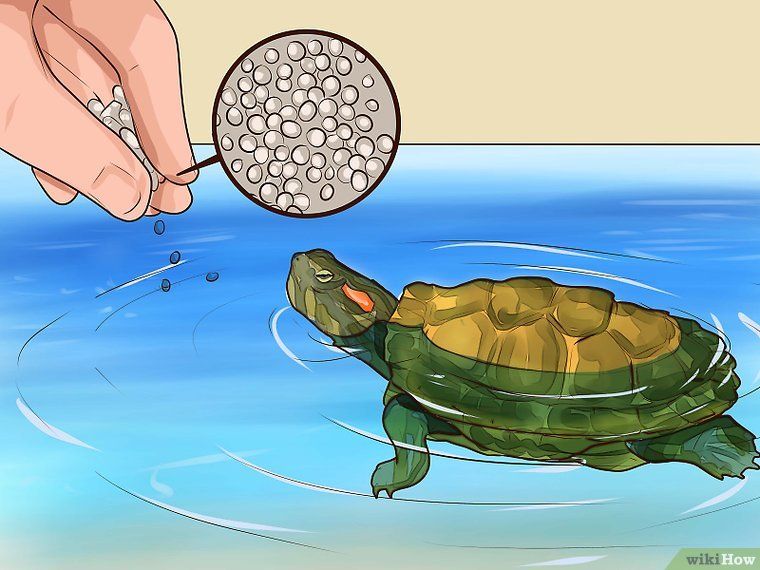 If a softshell turtle attacks an opponent, it will cause significant bodily damage.
If a softshell turtle attacks an opponent, it will cause significant bodily damage.
Amazon and the Amazon logo are trademarks of Amazon.com, Inc, or its affiliates.
Feeding - Turtles.ru - all about turtles and for turtles
In nature, turtles themselves choose the right food for them in accordance with the place and region of habitat. Their diet includes both plant and animal food in different proportions, as well as minerals. At home, the owner of the turtle should provide proper nutrition, and the food should be as close to natural as possible.
Turtles are divided into approximately 3 food groups, as listed below. Each group corresponds to a certain ratio of plant and animal food, which must be given. Constant feeding of turtles with inappropriate food for a given species (for example, giving Central Asian turtles meat or feeding bog turtles only grass) is fraught with problems with digestion, metabolism and internal organs. Turtles also need to be given weekly VITAMINS and CALCIUM.
!!! Small aquatic red-eared turtles up to 300g are recommended to be fed only with Reptomin, Sera raffy P, Sera carnivor professional, river fish ground into minced meat with entrails and bones, a mixture of fish and feed. As an addition to the diet: aquarium and land snails, food insects (not dried).
-
Carnivores . These are almost all completely aquatic and all young aquatic species: trionics, young red-eared, marsh, caiman, musky, etc. With age, some of them become omnivores.
Predatory turtles are fed with food insects, molluscs, fish, seafood, dry food ... More → -
Omnivorous are some adult aquatic turtles, secondary terrestrial turtles (adult red-eared, adult marsh, forest land turtles). The diet of omnivorous turtles is about half animal food and half plant food. In these turtles, the upper and lower intestines are approximately the same length.
-
Herbivores .
 Land turtles of the genera Geochelone, Testudo, Gopgherus, Agrionemys (including Central Asian, Egyptian, radiant, star-shaped, Greek, flat, spider, etc.). They have a longer large intestine, which is designed to digest fibrous grasses. Herbivorous turtles are fed natural, dried or frozen (depending on the season) plants from the edible list. Occasionally, they can be given some vegetables and very little fruit (only those species that eat fruit in nature). Read more →
Land turtles of the genera Geochelone, Testudo, Gopgherus, Agrionemys (including Central Asian, Egyptian, radiant, star-shaped, Greek, flat, spider, etc.). They have a longer large intestine, which is designed to digest fibrous grasses. Herbivorous turtles are fed natural, dried or frozen (depending on the season) plants from the edible list. Occasionally, they can be given some vegetables and very little fruit (only those species that eat fruit in nature). Read more →
Some of the herbivorous tortoises (for example, red-footed and Galapagos) can be given a snail, a mouse, or immobilized food insects once a month, but only those species that are described in the description that they can be given occasional animal food.
What are the most common mistakes turtle owners make?
- They give animal food to land herbivorous turtles, and only vegetable food to predatory aquatic turtles.
- Feeding turtles too often or too infrequently leads to obesity and abnormal body and shell growth or malnutrition and death.

- Vitamins and calcium are not given to turtles, as a result of which the turtles often have broken limbs, beriberi and crooked shells.
- They feed aquatic turtles exclusively with gammarus, bloodworms, or only one type of food, which in no case can be considered the main food
Hunger strike
summer hibernation, they are active only 3 months a year. Aquatic turtles may not eat for 6-7 months until it causes irreparable changes, also due in part to hibernation.Answers to the basic questions that arise when feeding turtles: the size of the food, its quantity, temperature, what kind of food to give, where to feed, top dressing.
Food size
Depending on the size of the reptile, the food should be finely, medium or coarsely chopped. The size of one piece should be less than half the turtle's head. Aquatic turtles tear large pieces with sharp claws, so they can be given larger food. Lettuce and weeds can not be cut.
Read more...
Both aquatic and secondarily terrestrial turtles (species that live in moist forests near water bodies) are predatory. The most important rule when feeding turtles is to feed different types of food, not the same food (with the exception of balanced dry food, for example, Sera Carnivor, Tetra Reptomin). In nature, the main diet of turtles are mainly insects and various small amphibians, worms, snails, small fish. Below in the article will be discussed about all the food options for predatory turtles.
Read more ...
- Other articles:
- Fat and usefulness of Pisces
- Gammarus
- Moth
- fodder
- Worms Rain
- Mice
- Mauchea
- )
- Video:
https://www.youtube.com/watch?v=QxgEw40OdMg
When purchasing a turtle, many are faced with the question of what to feed a land herbivorous turtle. Someone buys cabbage, someone buys dry food, and someone goes to the turtle. ru website and reads about how to properly feed turtles so that it does not harm their health.
ru website and reads about how to properly feed turtles so that it does not harm their health.
The main food for any herbivorous turtles are various weeds . In summer, they can be collected on the street in the forest-park area and dried / frozen for the winter. This is an affordable, free food rich in vitamin A. You need to collect plants away from the road, because. otherwise, they may contain heavy metal salts and chemicals. Mammalian worms are not dangerous to turtles. In the absence of the possibility of collecting weeds, they are replaced with salads (but only as part of the diet).
Read more ...
- Other articles:
- How to dry herbs for the winter
- Freezing of herbs for the winter
- Growing fodder plants at home
- How cannot be fed turtles
- Dry turtle
- Vitamins for turtles for turtles
- Calcium for turtles
- Video:
https://www.youtube.com/watch?v=pvRzxRDMejk
rarely.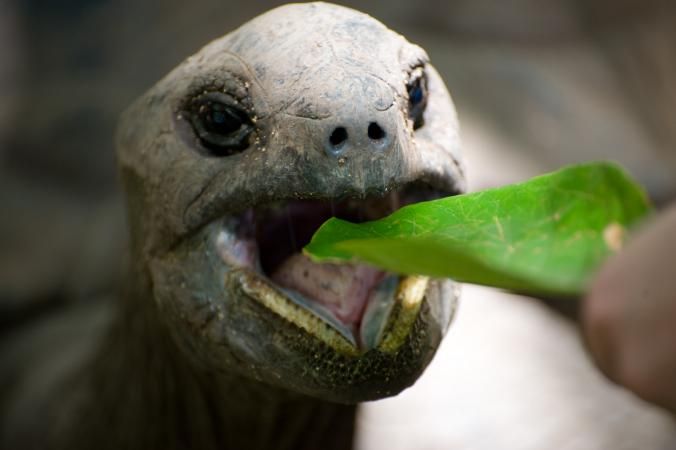 Below is a list of such products. If a certain product is not on the list of edible (for predatory turtles, for herbivorous turtles) and is not on the list of prohibited items (in this article), then it is better NOT to give it.
Below is a list of such products. If a certain product is not on the list of edible (for predatory turtles, for herbivorous turtles) and is not on the list of prohibited items (in this article), then it is better NOT to give it.
The main rule of feeding turtles is that the food should be close to that which the turtle constantly eats in nature. This means that if the turtle cannot get bread, milk, eggs, sausages, cat food, then they should not be given. If mangoes, papaya and kiwi do not grow in the turtle's habitat, then they should not be given either. Improper feeding of turtles leads to obesity (and as a result - curvature of the shell), problems with the gastrointestinal tract, food poisoning.
Read more...
- Video:
https://www.youtube.com/watch?v=6Se5XN59e5U
Turtles need calcium for the formation of the shell and bones of the body. As a result, due to a lack of calcium, the turtle shell becomes crooked, bumpy, claws are bent, limb fractures occur, and in the most advanced cases, the shell simply falls apart or becomes "cardboard".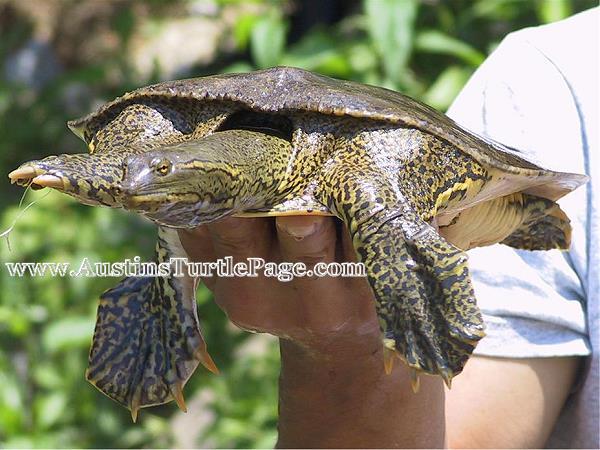 In nature, turtles find sources of calcium in the form of limestone, dolomite, oyster shells, corals, and animal bones. In a terrarium, turtles need to be provided with calcium, and the best option for this is ready-made calcium powder for reptiles. In addition to calcium, turtles need to be given powdered reptile vitamins.
In nature, turtles find sources of calcium in the form of limestone, dolomite, oyster shells, corals, and animal bones. In a terrarium, turtles need to be provided with calcium, and the best option for this is ready-made calcium powder for reptiles. In addition to calcium, turtles need to be given powdered reptile vitamins.
Read more ...
- Other articles:
- Vitamins for turtles
- Ultraviolet lamps for reptiles
- Dry feed for water turtles
- Dry turtles
- Feeding water tumors on the forum of dry turtles on the forum of dry charm forum
- Video:
https://www.youtube.com/watch?v=2zdstUM66nY
In nature, turtles get the vitamins they need with their food. At home, it is very difficult for turtles to provide all the variety of what they eat in nature, so you have to give special vitamin supplements. Turtles must receive a full range of vitamins (A, D3, E, etc.) and minerals (calcium, etc. ), otherwise they develop a whole range of diseases that can cause illness and even death. Commercial supplements of calcium and vitamins are usually produced separately, and both should be given in small quantities along with food once a week.
), otherwise they develop a whole range of diseases that can cause illness and even death. Commercial supplements of calcium and vitamins are usually produced separately, and both should be given in small quantities along with food once a week.
Read more ...
- Other articles:
- Calcium for turtles
- Dry feed for water turtles
- Dry feed for land turtles
- Feeding for the forum
- Feeding of ground turtles at the forum 9009 9009 :
https://www.youtube.com/watch?v=2zdstUM66nY
We recommend not using any dry industrial food for aquatic turtles as the main food, but only as Supplement to natural feed (fish, insects, snails, worms). Although some feeds are positioned as complete feeds by manufacturers, not every feed can boast of a balanced composition, where there is everything necessary for turtles (animals, plant components, vitamins and calcium in the right quantities). Some types of food (food based on dry fish, shrimp, insects, gammarus) can only be given as a treat to adult turtles no more than once a week.
What you need to pay attention to when buying food for young aquatic turtles: it should not contain or should contain very little gammarus (turtles do not absorb it well) and there should be more animal content (fish, mussels, mollusks) than vegetable. Gammarus in young turtles leads to tympania.
Read more...
Dry industrial food for tortoises can only be used as an additional food source , that is, it should be given no more than once a week. The rest of the diet should be weeds, fodder plants, salads, vegetables (minimum). In addition, many tortoises refuse dry food, both dry and soaked.
Below you can find a list of our most popular commercial tortoise foods:
Read more...
To properly feed turtles, you need to learn what they eat in nature. Even the diets of different species of land turtles vary greatly depending on their habitats. So, for example, steppe turtles eat more succulents and steppe plants in nature, but radiant and star-shaped turtles eat vegetables, fruits, and flowers more often.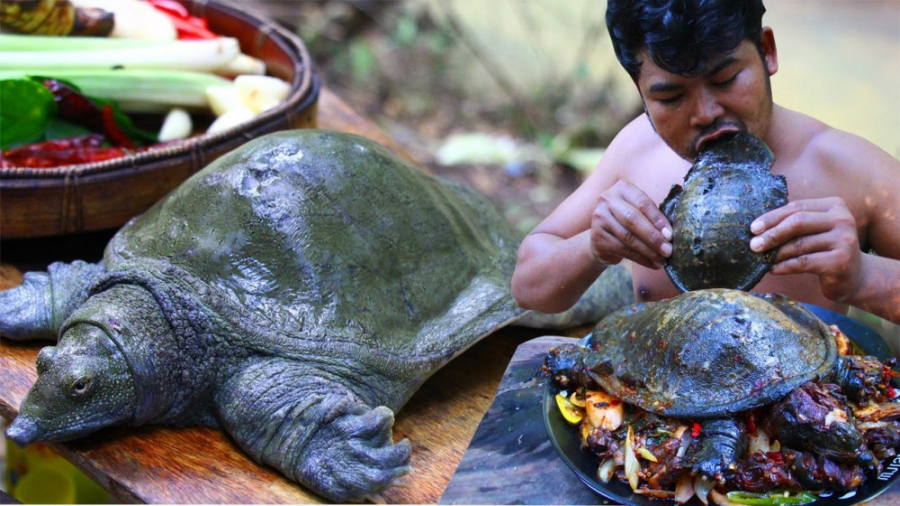 Aquatic turtles do not often eat fish, more often they are content with insects, snails, tadpoles.
Aquatic turtles do not often eat fish, more often they are content with insects, snails, tadpoles.
The diet below is recommended by many turtle owners, but is not mandatory.
Read more ...
Read more ...
Read more ...
Read more ...
Read more ...
more ...
- Other articles:
- Aquatic and semi-aquatic plants
- Trees, shrubs
- Wild flowers
- Fruits and vegetables
- Cacti, succulents, herbs
- Video:
https://www.youtube.com/watch?v=48tSWjP3b-g
What and how much to feed turtles at home
L:.1 -->
As we said in the previous article, turtles require special attention and proper care. We have already discussed the arrangement of the terrarium and the aquaterrarium, and today we will talk about the nutrition of turtles. What should be on your pet's menu to make the turtle feel good? Let's figure it out together.
Diet of herbivorous turtles
Quite a large group of turtles are herbivores. These are all land turtles, as well as such breeds as: Mediterranean, Central Asian flat, radiant, Greek and others.
Of course, plant foods should prevail in the diet of such pets. Turtles will be happy to eat unsweetened vegetables and fruits, plants, berries.
80% of the diet may consist of lettuce, leaves and edible flowers. Offer your pet: clover, plantain, dandelions, alfalfa, lettuce, cucumbers, pumpkin, zucchini, apples.
Ready-made feeds are now on sale, which include all the necessary nutrients and trace elements. You can buy food for turtles at any Zoo Gallery store.
Omnivorous turtles
This type of turtle includes aquatic, semi-aquatic, as well as certain subspecies of land reptiles, for example: marsh, spiny, red-eared, red-footed. For these pets, it is necessary to draw up a balanced menu, which will include both plant and animal food in equal proportions.
These can be: algae, plants, vegetables, salads, fruits, chicken meat.
Predatory turtles
The diet of these pets consists of 90% meat. Trionyx turtles, aquatic and young red-eared turtles, as well as marsh turtles, belong to this species.
These pets should be offered lean fish, beef, chicken, and fish liver. Adults can eat large pieces, it is better for young turtles to cut the meal into smaller ones.
Seafood turtles eat raw, the fish also does not need to be processed thermally.
Pork, beef, sausage, minced sausage, cheeses, bread, fruit and oily fish are prohibited for predatory turtles. It is best to feed with ready-made dry food.
How often should turtles be fed
Another question that often worries tortilla lovers is how many times a day to feed a turtle. Regardless of the type of your pet, you need to feed the turtle twice a day, at the same time. Decide when it's best for you to feed your turtle in the morning and evening, and stick to that schedule.



